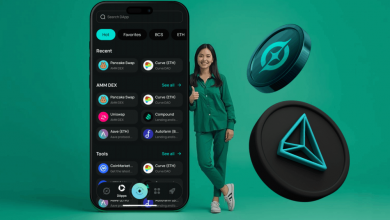Mastering Content Marketing Strategy for Small Business Growth

In the digital age, small businesses can’t just rely on traditional advertising to get people’s attention. When done right, content marketing is a cheap and long-lasting way to connect with your audience, build trust in your brand, and get people to buy things. Content marketing builds trust by giving your target audience information that meets their needs and interests, unlike aggressive sales techniques.
It’s not enough to just blog or post on social media to have a good content strategy. You also need to make sure that your content fits with your business goals, the way your audience acts, and the latest trends in your market. If you’re a small store, a service-based business, or a small hotel, content marketing can help you compete with bigger businesses without spending a lot of money on ads.
First, get to know your audience
The most important part of any content marketing plan that works is knowing your audience inside and out. Who are these folks? What problems do they have? What do they watch and read, and where do they do it?
Make buyer personas that are similar to your best customers. You should know their age, gender, goals, problems, content preferences, and how they buy things. Writing content that really speaks to your personas will be easier the more you know about them.
For example, Starlight Bookkeeping can write blog posts and financial advice just for freelancers and small business owners who need help with their cash flow or figuring out how to get tax breaks. Starlight Bookkeeping earns trust as an expert by answering common questions and making difficult topics easier to understand. This also brings in traffic from search engines.
Set SMART Content Goals
Your content marketing plan needs to have goals that you can measure. These goals should be SMART, which means they should be specific, measurable, achievable, relevant, and have a deadline.
Consider this:
- Do I want more people to know about my business?
- Do I want more people to sign up for my email list or get leads?
- Is the goal to get more people to visit my shop?
Set KPIs to keep track of how things are going. Some examples are the number of pageviews on a blog, the number of emails that get opened, the number of social shares, or the number of contact forms that are filled out. You can quickly tell how well each piece of content is doing by checking to see if it fits with a business goal.
Choose the Right Content and Channels
Different types of content have different uses at different stages of the buyer’s journey. At the top of the funnel, educational blog posts and how-to videos are good, but case studies, testimonials, and product demos are better at turning interested leads into customers.
Gil Painting, a professional painting company, wants to get the word out to more people, for example. The business could show off galleries of projects before and after they were finished, give ideas for how to decorate the inside of a house, or make checklists for seasonal maintenance. Video clips that show how to paint or interviews with customers can help people who are thinking about hiring professionals see how they can help them. Sharing things on sites like Facebook, Instagram, and YouTube makes them easier to find and builds trust.
Don’t try to do too much all at once. Instead, focus on the places where your audience spends the most time. Local businesses can also benefit from blog posts and Google Business Profile updates that are optimized for local SEO.
Improve Content for SEO
Search engine optimization (SEO) is a key part of any content marketing plan. If you optimize your content the right way, people who are looking for things or services like yours will have an easier time finding your business.
To figure out what your target audience really wants, do some keyword research first. When you write, use these keywords in a way that sounds natural, especially in picture alt text, titles, and subheadings.
But don’t go too far with making things better. Search engines put helpful, well-written information that adds value at the top of their lists. You can get backlinks by writing guest posts or working with other businesses in your niche. You can also include links to other pages on your site.
For example, a small bar like The Diller Room can get more business by writing blog posts or city guides about the nightlife in their area, their signature cocktails, or the history of their bar. By using local keywords and high-quality images, they draw in both locals and tourists who are looking for a unique place or experience.
Publish on a regular basis
Consistency is very important in content marketing. Keep your audience interested by posting new, relevant content on your blog every week, sending out a newsletter once a month, or posting on social media every day.
Make an editorial calendar to help you plan your content. Add important dates, seasonal themes, and events that will help you sell. Planning content ahead of time helps keep things going and makes sure you never miss a chance to connect with your audience.
You can use tools like Trello, Notion, or Google Sheets to help you keep track of your calendar. You can also get more use out of an idea by using it in different formats. For instance, you could make an infographic out of a blog post or a podcast episode out of a webinar.
Monitor Performance and Adjust Accordingly
There is no perfect strategy from the start. Check your analytics often to see what is and isn’t working. Look for trends. What topics get the most people interested? Which types of content get people to sign up?
To keep an eye on how well you’re doing, use tools like Google Analytics, social media insights, or email marketing dashboards. Use this information to change your strategy. Focus more on content that does well and phase out content that doesn’t.
Also, ask your audience for feedback. Get them involved in polls or surveys and ask them what they want to see. Their feedback can help you plan your content and get people involved in your community.
Content marketing is a long-term investment that pays off when you are consistent, creative, and honest. It gives small businesses a fair chance by letting you build trust, teach your market, and stay top-of-mind—all without going over your budget.
You will be in a good position for long-term growth if you focus on what your audience needs, give them real value, and make sure your content is optimized for the right channels. A smart content strategy can change the way you connect with customers and help you stand out in a crowded market, whether you’re a bookkeeping company, a painting company, or a local lounge.





